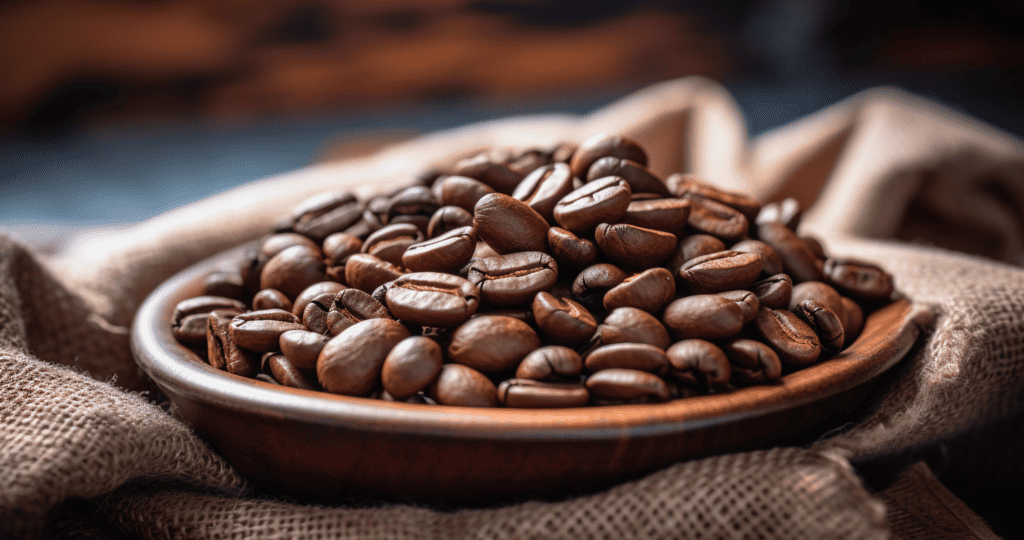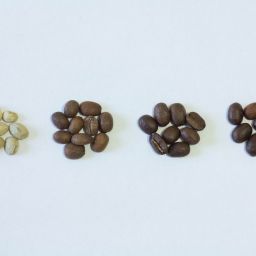
Embarking on the journey of coffee tasting and bean selection as a beginner is an exciting exploration of flavors, aromas, and brewing techniques. Coffee, with its rich history and complex profile, offers a unique experience with each cup.
For newcomers, the vast array of beans and brewing methods can seem daunting, yet it provides an opportunity to discover personal preferences and the nuances that distinguish different types of coffee. This introduction aims to demystify the process, guiding beginners through the initial steps of choosing and tasting coffee beans.
Understanding Coffee Bean Basics
Types of Coffee Beans (Arabica vs. Robusta)
Coffee beans primarily fall into two categories: Arabica and Robusta. Arabica beans, known for their smooth, intricate flavor profiles, are favored for their quality and depth. They thrive in high altitudes and are predominantly grown in Latin America, Africa, and Asia.
Robusta beans, on the other hand, are more robust, as their name suggests, with a stronger, more bitter taste. They contain higher caffeine levels and are generally more resistant to pests and diseases, making them easier to cultivate in various climates. For beginners, Arabica beans are often recommended due to their more accessible and enjoyable flavors.
Coffee Roasts Explained
Roasting plays a pivotal role in defining the taste of coffee. Roasts are categorized as light, medium, and dark, each offering distinct characteristics. Light roasts retain most of the bean’s original flavor, highlighting the bean’s natural profile, including acidity and fruitiness.
Medium roasts offer a balanced flavor, aroma, and acidity, making them a popular choice for those exploring coffee tastes. Dark roasts, characterized by their bold, smoky flavor, tend to hide the bean’s original qualities but are favored for their strong taste and reduced acidity.
Selecting Your First Coffee Beans
Best Coffee Bean Brands for Beginners
For beginners, choosing the right coffee bean brand can enhance the coffee experience. Brands like LifeBoost, Blue Mountain from Jamaica, and Volcanica Coffee Kenyan AA are excellent starting points. LifeBoost’s Organic Medium Roast is praised for its low acidity and rich flavor, making it a comfortable introduction to coffee.
Blue Mountain Coffee offers a smooth, well-balanced cup, renowned for its full body and mild flavor, ideal for those new to coffee. Volcanica Coffee’s Kenyan AA, with its bright acidity and fruity notes, provides a refreshing and exciting taste for beginners exploring different flavors.
Flavor Profiles
The origin of coffee beans greatly influences their flavor profiles. Beans from Africa, such as Ethiopian and Kenyan, are known for their floral, fruity flavors, offering a light and refreshing taste. Latin American coffees, including Colombian and Brazilian, typically present a more balanced profile with nutty, chocolaty notes.
Asian coffees, like those from Sumatra, offer earthy, spicy flavors, providing a more intense experience. Understanding these profiles helps beginners navigate the diverse world of coffee, allowing for a more informed selection based on personal taste preferences.
Preparing Your Coffee
Brewing for Intensity
The taste of your coffee is significantly influenced by the brewing method, which falls into three main categories: gravity, immersion, and pressure. Gravity methods, like drip coffee, allow water to flow through coffee grounds, yielding a balanced and clean cup. Immersion methods, such as French press, soak the coffee grounds in water, extracting a bold and rich flavor.
Pressure methods, exemplified by espresso, force water through coffee grounds at high pressure, creating a concentrated and robust cup. Each method affects the flavor profile differently, allowing enthusiasts to explore various aspects of coffee taste.
Recommended Equipment
For beginners, basic brewing equipment includes a reliable coffee maker for the chosen method. For gravity, a simple drip coffee maker; for immersion, a French press; and for pressure, a basic espresso machine or Aeropress. Additionally, a quality grinder is essential for fresh, flavorful coffee.
Grinding Coffee Beans
The grind size is crucial for optimal coffee extraction. Fine grinds are ideal for espresso, medium grinds suit drip coffee makers, and coarse grinds are best for French press. Achieving the right grind ensures the coffee is neither under-extracted, tasting weak and sour, nor over-extracted, tasting bitter. Experimenting with grind sizes can help you find the perfect balance for your preferred brewing method.
FAQs
- What are the best beans for a drip coffee maker? Medium roast Arabica beans are generally recommended for their balanced flavor.
- How should I store coffee beans to maintain freshness? Store beans in an airtight container in a cool, dark place to preserve their flavor.
- Any tips for tasting coffee? Pay attention to the coffee’s aroma, acidity, sweetness, body, and aftertaste. Try tasting different roasts and origins to understand your preferences.
Conclusion
Choosing the right coffee beans is a crucial first step for beginners in the coffee journey. Understanding the differences in bean types, roasts, and brewing methods can enhance the coffee experience, offering a world of flavors to explore. Brands like LifeBoost, Blue Mountain, and Volcanica Coffee provide excellent starting points.
Experimentation with brewing and grinding techniques will also lead to discovering the perfect cup of coffee that suits your taste. Encouraging a spirit of exploration and patience in this process will yield the most rewarding coffee experiences.








